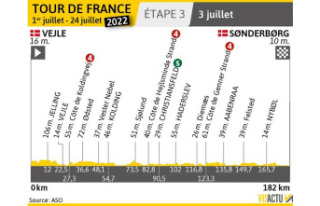4500 French primary, middle, and high school students participated in an experiment by Thomas Pesquet, astronaut at the European Space Agency. It took place in 2021. The experiment was conducted aboard the International Space Station. It orbits at an altitude approximately 400 km and travels at 28,000 km/h. It was a matter of studying a strange creature in microgravity (very weak gravity at the station), sometimes within the framework of "Blob-ISS", sometimes under the Earth's gravity in an experiment called
The film "The Blob", a 1958 American horror/science fiction movie, is the inspiration for the name. In it, a giant gooey alien terrorizes a Pennsylvania town. But, back to Earth today.
Did you know that you could meet the blob while walking through a deciduous wood or a garden? It is a living organism that has a compact or gelatinous appearance. It is usually a single cell that is about the same size as a human hand but can grow to be enormous in either case. There are many species. The one we are most interested in and the one sent to space station is Physarum Polycephalum. It was given this name in 1822 by a mycologist (a mushroom specialist). It can be found under bark, leaf litter, and decaying tree trunks. It is easily identified by its yellow color and the presence of veins within the gelatinous specimen.
Although it looks like a mushroom, the blob is not one. It is a cousin to amoebas in the tree of life. This is an organism made up of one microscopic cell.
Throughout its life, the blob can take on many forms. It takes on a gelatinous appearance during its life cycle. Because the cell has thousands of nuclei, this form is known as plasmodium. Because of the presence pigments, its color is yellow. It eats bacteria and fungi in nature. The only predators it would have are slugs or certain beetles.
It must be warm (or warm enough to reach 30degC), and it should be humid to be active. It should be between 18-24 degrees Celsius. It can become too hot or cold and it will go dormant, forming a dense mass called the sclerotium. This will last for long periods of times until it begins to rain again, when it becomes bearable again.
The plasmodium ceases to feed when there is no food left and starts reproducing. Each core within splits into two pieces at this point.
At the foot of a fungus-like foot, the nuclei form spores. The sporangia then open, releasing many spores that disperse and are carried by wind to the ground. The spores then break apart, releasing microscopic amoeba cells.
One of them may encounter another species of the same or different species. The two will fuse to create a single cell. This is called sexual reproduction. The nuclei merge inside, and the resultant nucleus begins to divide many times, eventually giving rise to thousands of identical nuclei. The cell also grows until it forms the plasmodium, which can then be visible and sometimes even giant.
The plasmodium is grown in the laboratory using rolled oats and a Petri dish. Audrey Dussutour, CNRS's research assistant, has already conducted many experiments around the globe. One experiment in a labyrinth demonstrated that the plasmodium can remember where it is and what the best food is.
What effects does microgravity have on the movement of the plasmodium's plasmodium? Thomas Pesquet, who received four sclerotia from the summer 2021, rehydrated them on September 2, 2021, the day before the start of school.
A camera was placed inside the cell and took a picture every ten minutes for seven days. There were two protocols: one called "Exploration", where two blobs were left without food, and another called "Exploitation", where two more blobs could eat multiple foods sources.
The classes from CNES and Toulouse Academy had to follow the same protocol on Earth after they received a kit at August's end and started rehydration October 11.
This site shares movies, graphics and commentary about plasmodia activation, movement in microgravity, and on Earth, despite unreadable video files aboard the station.
Laurent Palka (Lecturer, National Museum of Natural History, MNHN)
This article was republished by The Conversation under Creative Commons. You can read the original article.
The contents of the file
"What is a Blob?"
How can I tell if my cat likes me and is happy?
Why are fingerprints so different?












